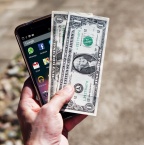Death threats over mouthwash. Not words we’d expected to hear in the world of influencer marketing - but the industry is full of surprises.
This month, a paid promotion between Johnson & Johnson and London-based influencer Scarlett Dixon (aka Scarlett London) went viral for its overly staged nature.
From the balloon-clad bed to the plate of tortilla wraps posing as ‘pancakes’, the sponsored image was accused of giving a false reality to make us feel inadequate (and buy Listerine).
While this is pretty much advertising to a tee (right?), it didn’t stop the barrage of insults and death threats to the influencer rolling in.
With the dust from the social media storm just about settled, it seems like a good time to focus on the best influencer practices to avoid going viral for all the wrong reasons. Make sure you steer clear of these slip-ups.

Working With Brands month is brought to you in association with Nevaly. We bridge the gap between your brand objectives and the social landscape by delivering creative solutions that resonate with audiences through content and activations they know and love. Find out more here.
Click here to view the list »








